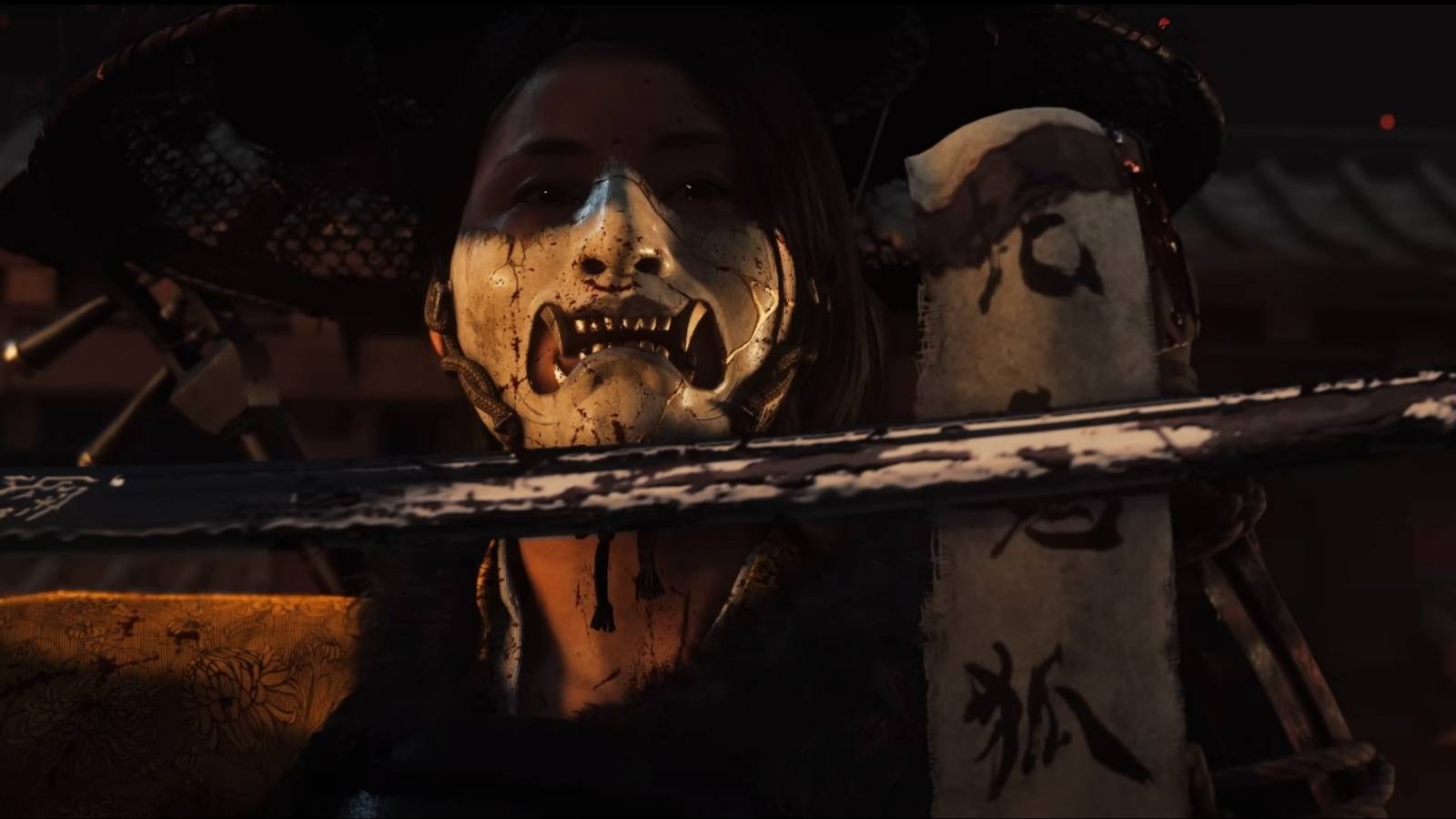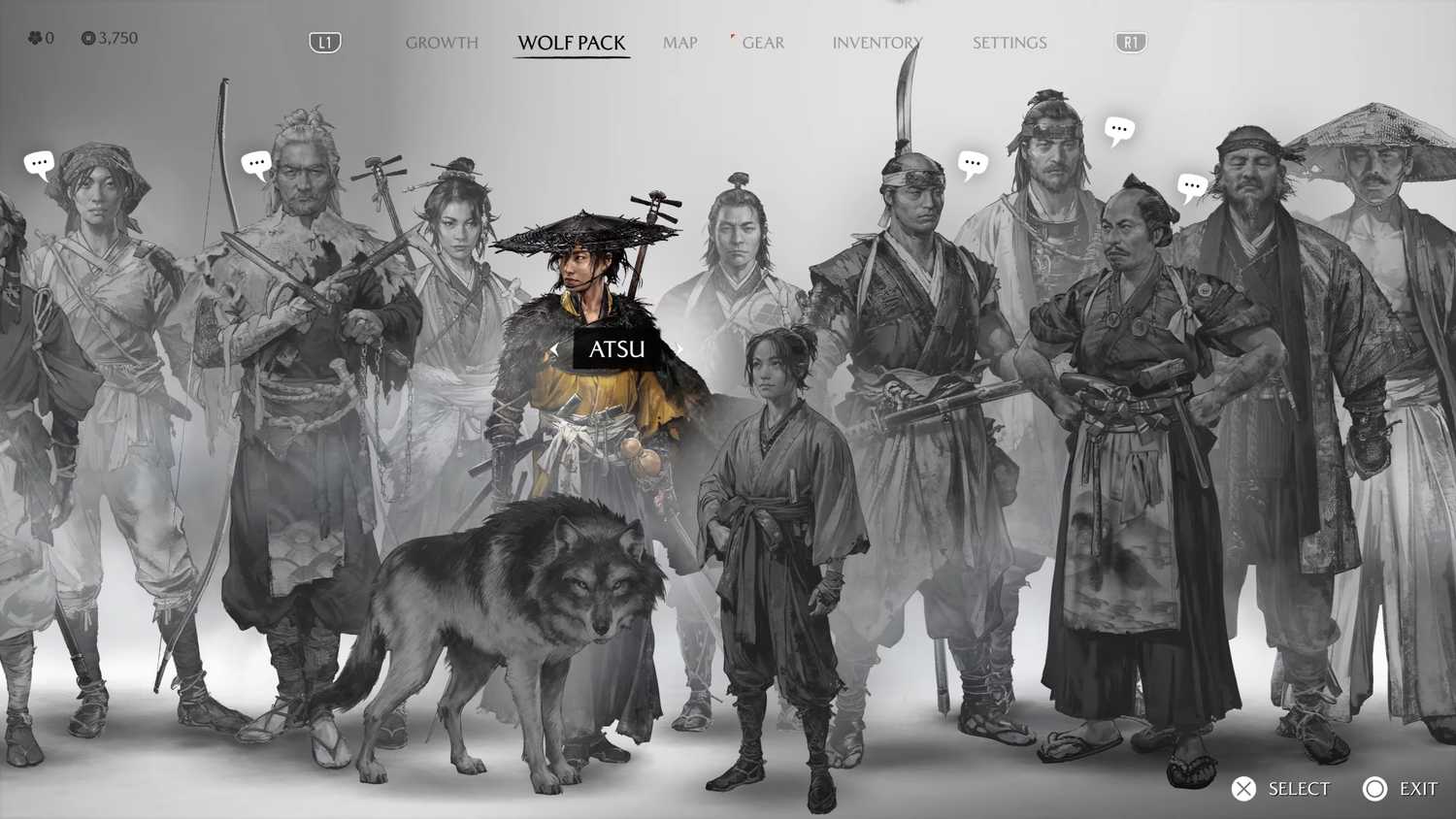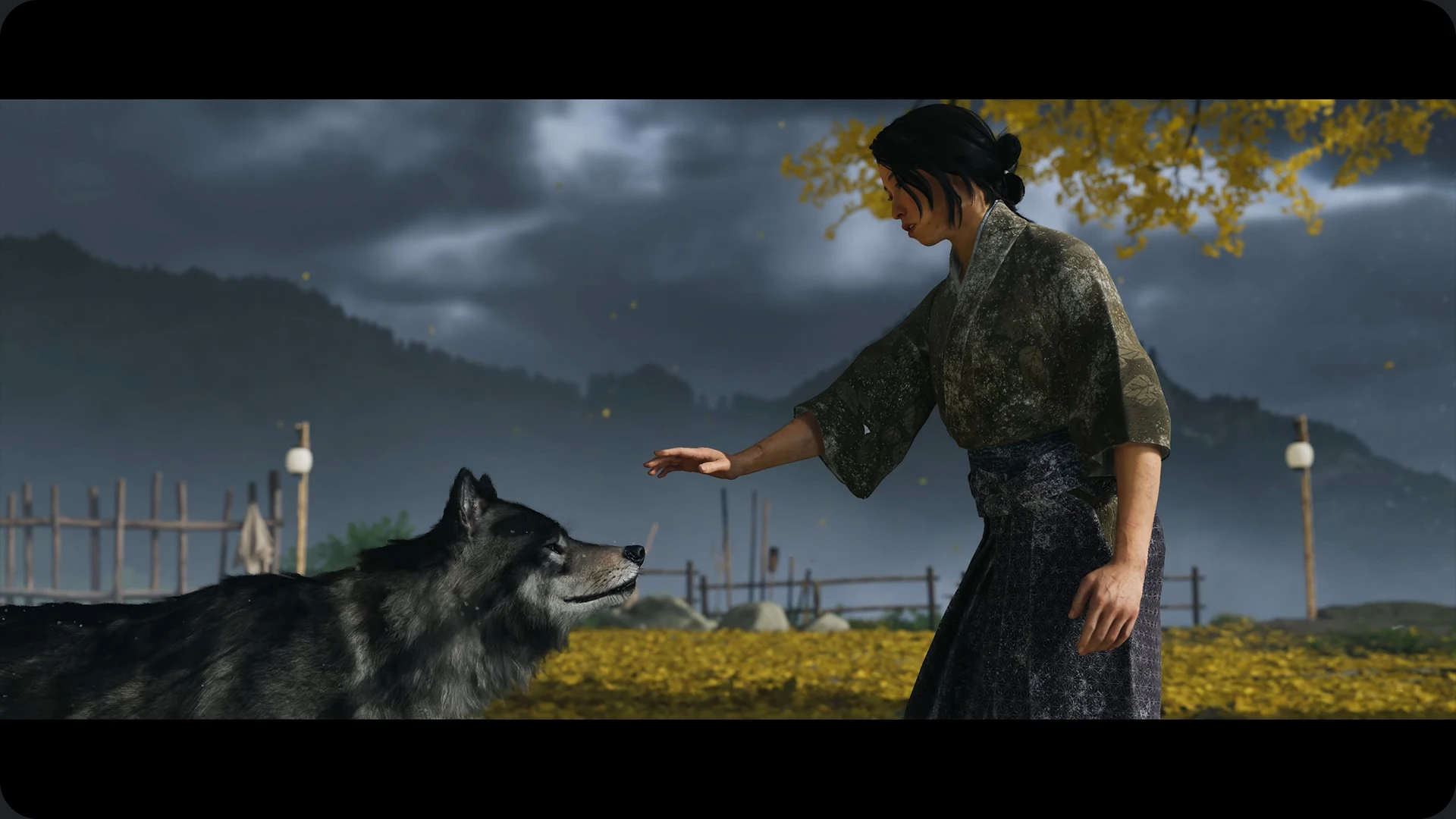Ghost of Yotei: One Step Forward, Two Steps Back
Fans of Magnolia Keep may have noticed I've been quiet the last few weeks, and the simple reason for that is that Ghost of Yotei came out. Setting aside the shitty conduct of Sucker Punch leading up to the game's release, I've been enjoying but having mixed feelings about it. If you want the short version, it's fantastic to play, but fails to stand up to its predecessor. While it has some solid gameplay tweaks, I think I prefer the tighter experience of Ghost of Tsushima.
 |
| I can't really get my own screenshots because Yotei is a console exclusive, so I'll be pulling from the internet to add a little visual spice. This one is via The Gamer. |
Part One: Solving the Ubisoft Problem
Over the past decade and a half, the Ubisoft open-world has calcified into its own subgenre: you complete a given set of chores in an area, then climb a tower (usually solving a little traversal puzzle in the process), which reveals the location of the next set of chores. You're never more than a minute or so from any given piece of content, which allows play sessions to have a natural flow. It's sorta the gaming equivalent of bland porridge-serviceable enough, but at the cost of devs not really having the ability to differentiate-one tower or enemy outpost or chase is gonna be much like the other three dozen, and this gets worse as the game gets bigger. I have a frankly embarrassing amount of hours in Assassin's Creed: Valhalla, and the number of main plot beats, let alone sidequests, that I can remember is maybe around three. So many man-hours were put into developing Essex and Kent and yet I can only remember one of them-my memory of the game is going in a straight line from one point of interest to another, only stopping occasionally because I hit a river and hadn't bought the swimming upgrade for my horses.
Ghost of Tsushima aimed to fix this by making the world worth engaging with, and encouraging you to pay attention to your surroundings. Rather than some kind of HUD, the way to objectives is instead pointed via the wind, explained diegetically as the maybe-magic-maybe-mundane of your father's spirit guiding you. When near a point of interest, a golden bird will chirp and fly in, and then you follow it to its destination. With a certain armor, other types of collectibles will be indicated via a glowing, pulsating green dragonfly that you follow. Its a way to make you actually look where you're going. Each type of thing has its own visual signifier, from the circling birds of haiku to the steam and red trees of hot springs.
As good as this is, however, it did need some refinement. The unlock-an-area do-the-chores loop is still there, its just that instead of towers you're clearing out Mongol camps that you need to find (usually via black smoke in the air). You will still spend a lot of time going from question mark to question mark, filling out your grocery list.
 |
| via Nexusmods, a good example of what the wind looks like |
Here is where Yotei triumphs. Baseline traversal has become more interesting, as your horse can now jump, and you gain speed boosts by either following certain paths, picking up resources, or leaping over obstacles. Enemies will set up ambushes that you need to watch out for, or you will get knocked off your horse and thrown into a fight you're not ready for. More than that however, is the world design-for whatever reason, I was much more able to go, "Huh, I wonder what's over there." and more often than not there was something there I found all by myself. The populace of Edo is more than happy to give you random rumors of locations, but then you need to do a little minigame to figure out exactly where in the world it is by staring at the world map and its geography. Heading towards campfires at night, I always found something, and it was great. Coupled with the addition of one-way slopes, and I was suddenly able to tell "Okay, so it's supposed to be tricky to get up there. I wonder why?" Exploring was a series of small stories I was able to tell with the game, from being ambushed during a wolf den chase, to finding a married couple and giving them some money because I thought they were a hot spring. On top of all of this, your XP is gained not by killing enemies or even doing side missions, but finding shrines in the world. So looking around becomes an important component of keeping up the power curve (or else spending precious money on maps).
Part Two: Gameplay Changes
 |
| Via restart.run, the Odachi is a big bastard and probably the best weapon in the game, but I never got the hang of its timing. |
The question "How does Yotei play?" is mostly answered by saying "It's Tsushima, but more and more difficult." Rather than the first game's Four Stances (one paired to each enemy type) and Quickfire Weapons, Yotei boasts five of each. The main melee weapons (single katana, dual katana, yari, odachi, and kusarigama), are each vastly different from each other, with different reaches, parry timings, and special attacks. I've never been in the upper echelon of players of these games (I play on Normal), and so I was initially overwhelmed, but by the the end I was figuring out little Tricks, like how the Odachi's super-heavy attack is secretly faster than its normal heavy. Disarming and thrown weapons brought wonderful flair into fights, even if I was never the best at the disarm timing. My complaints come in two forms: a de-emphasis on stealth and the weird pacing of unlocks.
Tsushima was positively littered with Mongol Camps (62 including the DLC), large arenas that could host either stealth, melee, or some combination of the two. The stealth may have been simple, but it was satisfying and empowering, and especially later-on as enemies got tougher it became a good opener to build up resources just in case things did become a fight. Yotei has far fewer such camps (23 total as of this writing), providing less opportunities for any sort of sandboxing. In addition, Yotei has a bad habit of cutscening you into a fight. Enhanced Hearing, your typical Detective Vision see-through-walls mode, is a late-ish game unlock according to the seemingly correct order to do areas in, and the ability to distract enemies-once the domain of the Windchime thrown weapon-is now relegated to pick-upable empty jars of sake, placing stealthy players even more at the mercy of the level designer.
Part Three: Narrative Structure
Something the Ubisoft Open World has been doing as of late is abandoning a linear story in favor of "Areas."-regions controlled by a specific Bad Man which each have their own self-contained story, but none of which can affect the others due to necessity. Defeat all the local Bad Men and you unlock the end of the game. Its a way to make the game have less friction on the players' part, at the cost of investment.
Ghost of Tsushima does not do this-aside from its DLC Island, which is largely self-contained for the simple fact that it was finished afterwards, it has a tight linear story with a handful of characters across the archipelago that still emotionally affects me. In addition, its core cast of side characters each have at least a handful of side-missions dedicated to them, where you learn more about them, the world, and the main character. Some of my favorite moments in the game come from these side missions, to the point that I'd honestly consider them to not be optional-you get the best experience of the main story having done them because you've spent time with your allies.
Ghost of Yotei has areas with a local Bad Man you need to defeat. Kind of. The overarching structure of the game is killing the six members of a gang of criminals known as the Yotei Six. One is killed in the tutorial, two in the first act (which comprises the first 80% of the game, we'll get back to that), and the last three in Acts Two and Three (Act Three lasting approximately an hour). Within that first Act, there are five-ish areas to explore: the grasslands, the kinda-mountains, the fire plains, the Ainu area, and the snow area. They can be done in largely any order (the grasslands have a handful of story missions, the kinda-mountains one, and the Ainu area none). This has some problems:
- No areas can affect each other until the final acts of the game, at which point characters can finally come together.
- Each area hides different mechanical tools (weapons and abilities), so the optimal thing to do to unlock every weapon (and thus become good at fighting every type of enemy) is do the opening quest of each region, make a beeline to the relevant sensei, and then get the hell out of dodge, which is what I did. Maybe this is why I was so overwhelmed at the start with all the options, but I also couldn't stomach the idea of missing my tools. To cap this off, the Detective Vision (which you started with in the first game) is locked deep in the story of the snowy area, which a new player is likely to do last.
 |
| via GameRant, the Wolf Pack menu screen. This was clearly supposed to be so much more than it is. |
Part Four: The Story (Spoilers)
Ghost of Tsushima has a pretty good story for a video game. Sure, it uncritically apes old samurai movies, and is about as historically accurate to the first Mongol Invasion of Japan as the dump I took this morning, but the stuff it's stealing from is pretty good, and that trickles down. It does, to my mind, have a solid emotional core as its hero, Jin Sakai, is caught between the rigid structure he grew up in and the people he is sworn to protect. The DLC even throws in themes of trauma and oppression and class consciousness, in ways that are handled pretty well!
Ghost of Yotei has a story.
Okay that's not entirely fair. Sure, the structure works against it, but it is very clearly working its themes and stuff into its side material. The basic framing is this: our heroine, Atsu, starts out as a murderous shell of a person, dubbed the onryo due to supposedly dying and coming back during the tutorial. As the game continues, the game keeps questioning her need for revenge as being less about bringing peace to her family (including her surprise-still-alive brother and niece), and more for her own selfish reasoning. This can work, but the problem becomes the pacing. Depending on when you do different story missions, Atsu might be single-mindedly focused on killing the Oni to the detriment of her allies, but willing to forgive the Kitsune twenty minutes later.
When Jin Sakai made the decision to embrace the moniker of the Ghost at the end of Act Two in Tsushima, it was the culmination of hours worth of myth-making, and would have an entire act's worth of consequences to go. Atsu is dubbed the Onryo at the end of the tutorial, and it's just kind of thrust upon her, seemingly because well it's called Ghost of Yotei, you gotta have a ghost in there somehow.
The entirety of "Act Three" of Yotei, consisting of two story missions after Atsu's pursuit of vengeance gets her allies captured due to the stupidest siege in all of fiction, yes even that one, she learns to find something to live for, while also leaving her niece alone at the one place the head of Yotei Six knows her family has a personal connection to. It feels less like a genuine character turn and more like someone has flicked her switch from vengeful spirit to family member, and the final confrontation has people disappearing off screen because they were supposed to die in earlier drafts but then other people die instead and it doesn't really hit the same because I had barely seen him in the last twenty hours.
Then at the end, as Atsu is living her new peaceful life with her niece, the wolf that's been your companion since the beginning of the game, who fights to save other wolves, returns, and Atsu apologizes, saying her hunt is over. Like damn, I guess that's gratitude for you, huh?
That doesn't mean it's all bad though, there were some bangers. The Bounties typically had just enough personality for me to enjoy hunting them down. The Teshio Ridge storyline was actually a lot of fun even if the puzzles were the dumbest thing I've ever seen. The final region was much better due to its tighter focus of being an active warzone and being able to be told in a linear order, and the Ainu quests were a ton of fun (huci gang huci gang huci gang huci gang). And finally the Storm Blade side mission made me tear up as we bid a fond farewell to the protagonist of the first game.
Part Five: Conclusion
Here are a few miscellaneous complaints before I wrap up:
- They kept trying to have music with lyrics playing on long journeys that made you Think TM and I'm sorry, but you're not Red Dead Redemption 2. Not everyone can pull of that trick.
- The Ainu people ended up completely sidelined and relegated to a minor faction in the war between two factions of colonists, despite the fact that this is their home.
- I really didn't like how the haiku you got to make yourself in the first game were replaced by premade paintings whose brush strokes you just Had To Do they way they thought.
- In the first game, your Ghost Mask was something made by an ally who had a deep significance to you. In this game, it's a random theater mask Atsu picks up, and then she gets a different Onryo Mask half an hour later. It feels like they couldn't decide on a final design.
 |
| Oh no |



I knew you couldn't keep out of world of darkness XP
ReplyDelete